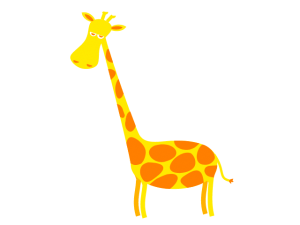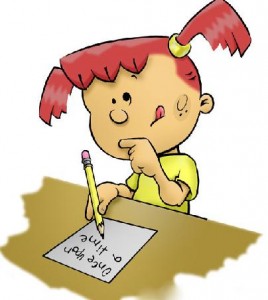A true story contributed from a school counselor. All of the children’s names have been changed to protect their identities.
Jessie came to my school counseling office after being referred by her 5th grade teacher. “Jessie has been more anxious in class and at recess in the past month. She seems to have a very difficult time with peer relationships,” the teacher wrote.
At her first visit to my office, Jessie seemed unsure of herself. She avoided eye contact with me and responded minimally to my questions. However, she told me that she enjoyed using art materials. Jessie agreed to come to counseling a few times to work on art projects that would help her get along better with her classmates.
“I have two best friends,” Jessie told me during her second visit as she experimented with watercolors on heavy paper. “Mandy is really pretty. She has the best clothes and she likes telling us about fashion. And Kaitlyn is really cool and smart and good at soccer.” Jessie added that she felt shy and nervous around Kaitlyn and Mandy, not knowing the right thing to say or do. The more Jessie told me about her two friends, the more it became clear that Jessie didn’t think of herself as cool or smart, or good at anything in particular. To increase Jessie’s self-esteem, I proposed an art therapy project involving a small empty matchbox (the type with a drawer that slides out). I explained that Jessie would be using the matchbox and other materials to show me something about her best qualities as a person.

First, I offered Jessie a choice of matchbox size, small or large. She decided to use a small box. Next, I provided a large range of materials—some to decorate the box itself, and others that could be included inside the drawer or glued to the outside. Jessie chose an assortment of small beads and sequins, glitter glue, decorative scrapbook paper, fabric scraps, and a tiny plastic giraffe. She explained that the giraffe’s long neck represented “sticking your neck out for a friend” and that she sees herself as being very loyal and helpful. Jessie glued scrapbook paper to the outside of the box and added sequins and glitter glue as decoration. She glued a piece of bright yellow fabric to the inside of the drawer, then added several small colorful beads and the plastic giraffe. Jessie worked on the matchbox project over the course of two sessions. During that time, she was able to articulate several other aspects of herself that she liked, such as being organized with her schoolwork and being a helpful big sister at home.
In our next two sessions together, Jessie was open to working on a second art therapy project involving hidden messages. She had begun to express mixed feelings about Mandy and Kaitlyn. “They’re not always nice to me. One time Mandy called me a bad name, and she never apologized,” Jessie said. I showed Jessie how to create a simple pamphlet-style paper book with copy paper, staples, and a piece of colored cardstock for the cover. Then Jessie added two secret elements to her book. She cut a door shape from heavy paper, gluing the hinge to one of the book pages, so that a message could be hidden behind the door. Jessie used alphabet stamps and a stamp pad to carefully create her secret message behind the door: “I want my friends to be respectful of me.”
Then Jessie glued a small envelope into another page of her book as a place to hide something she wasn’t ready to reveal yet. She spent several minutes carefully hand-writing a one-page letter to Mandy, then read the letter out loud to me. It described how Jessie’s feelings had been hurt by Mandy’s use of a mean name and asked Mandy for an apology. Jessie folded up the letter as small as she could, then tucked it into the hiding place she had created with the envelope and sealed it shut. Jessie appeared to be relieved by the act of writing the letter, but also soothed by the idea that she did not have to share it with Mandy if she chose not to do so.

At our next session, Jessie announced that she wanted to read something to me. At home between sessions, she had composed a new letter for both Mandy and Kaitlyn. This one was carefully hand-lettered in brightly colored markers. The letter began by describing what she liked best about each friend and also about herself, then ended by suggesting that the three friends set a ground rule of always respecting each other. Jessie decided to wrap a multicolored ribbon around this letter to make it look special, “because Kaitlyn and Mandy are really special friends to me and I’m going to give them this letter today at lunch.” As Jessie left the counseling office, she was smiling broadly with her head held high.
My oldest daughter works this way, too. She’s as shy and socially anxious as can be, even around family friends and relatives. However, if you pull out something that she’s recently created (she was into photography for a while, for example) she can hardly contain herself and really comes out of her shell.
Thank you for this touching story! Art can work wonders, I have seen this in the clinic context with anxiety patients numberless times. We should have more scientific studies about this approach since it is such a great chance for children as well. Great work!